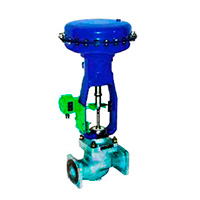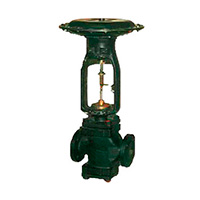Control valves
Description of Section "Control valves"
Control valves are a type of pipeline valves designed to manage flow of the working medium. They are used to regulate pressure, flow rate, temperature, or other parameters of the working medium in systems that transport liquids and gases.
Operating Principle of Control Valves
The principle of operation of a control valve involves changing the flow area of the pipe by moving a shut-off mechanism. This allows for control of the working medium flow:
- Changing the Flow Area: The shut-off element (plunger or spool) moves inside the valve body, reducing or increasing the area of the opening.
- Pressure and Flow Control: Reducing the flow area decreases the pressure and volume of the transported medium.
- Actuator Mechanism: The movement of the shut-off element is performed manually or automatically using electric, pneumatic, or hydraulic actuators.
Classification of Control Valves
By Design:
- Straight-Through: Flow of the working medium moves in one direction without changing direction.
- Angle: Change the flow direction by 90 degrees; used at pipeline turns.
- Two-Way: Regulate flow in one direction; can switch the flow direction to the opposite.
- Three-Way: Have three ports for mixing two flows or splitting one flow into two.
By Type of Shut-Off Element:
- Globe (Plunger): The working element is a plunger (disc, needle).
- Cage: The shut-off element is a hollow cylinder with perforations.
- Spool: Use a spool for flow regulation; known for high sealing.
- Diaphragm: The working element is an elastic membrane made of rubber or fluoroplastic.
By Control Method:
- Manual control.
- Automatic control (electric actuators, pneumatic actuators).
Body Materials and Their Applications
The body material determines the application area of the control valve:
- Cast Iron: For systems with temperatures up to 220 °C and pressures up to 25 kg/cm2.
- Carbon Steel: For temperatures up to 425 °C and pressures up to 40 kg/cm2.
- Stainless Steel: For aggressive media and temperatures up to 425 °C.
Application Areas
Control valves are used in various industries:
- Oil Refining: Managing the flow of oil and petroleum products.
- Chemical Industry: Handling aggressive liquids and gases.
- Thermal Power Engineering: Controlling heat carriers in heating and hot water supply systems.
- Food Industry: Regulating the flow of food liquids.

